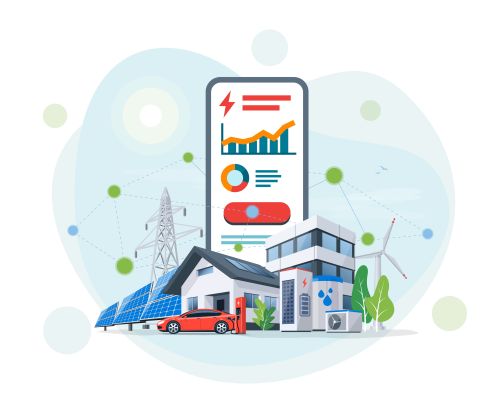How can technological innovation in heat pumps help address the challenges of climate change?

We are all aware that tackling climate change requires decisive action, and the 2050 UK net-zero target reflects this. To help achieve this ambition, a host of policies and legislation are coming into force which will have an impact on the way we construct and heat our buildings. The key objective of the Buildings Mission (part of the Government’s ‘Heat in Buildings’ strategy), is to reduce the energy we use in buildings by 50%. The 75-80% carbon reduction target set out by Future Homes Standard for 2025, and the headline of the interim Part L update 2021 ‘no future gas connections allowed from 2025’, although not yet confirmed, might spell the end of our dependency on gas.
Technology that can replace fossil fuels and help decarbonise heat in our buildings is already available. Air, ground, and water source heat pumps have been deployed as a low carbon solution in a range of climates and are now considered proven and tested technology. Whilst the role of hydrogen in the decarbonisation of heat must also be carefully considered, its high cost and challenges with the effectiveness of delivery are limitations to a realistic rollout today or in the near future.
The industry should now take into consideration innovative heat pump solutions and complementary technologies capable of speeding up the decarbonisation of heat. Designed to overcome the challenges of modern construction, these technologies offer flexibility of specification and are cost effective. Industry has already seen successful installations of hybrid systems that utilise Hot Water Heat Pump, high heat retention storage heaters and direct acting panel heaters in both new projects and retrofit.
The Zeroth Energy System, an ambient communal loop that delivers highly efficient low carbon heating, hot water and space cooling, has also now been installed at a variety of residential projects across the UK. The solution helps to address the problem of overheating, an issue that modern residential developments with low permeability, have been grappling with. These technologies provide answers to challenges that developers often struggle with, particularly in urban and metropolitan environments. These include lack of space, regional compliance, and speed of installation.
Can innovative hybrid solutions help address climate change challenges today?
Hybrid technology is not limited to a gas boiler and heat pump combination. It can be a mix of any technology to provide heating, hot water, or comfort cooling. Hybrid systems are designed to offer specification flexibility if a full heat pump solution is not possible or suitable. Such systems are well suited to a situation where a traditional heat pump is the preferred specification choice, but installation is not possible due to technical challenges, such as a lack of space or capital funding.
For the best results in carbon reduction, low carbon technology must address the often-dominant energy load of domestic hot water. This allows for flexibility of technology for the space heating provision to suit the development goals, and such an approach applies to both new built developments and retrofit.

How does the Edel Hot Water Heat Pump reduce the carbon emission of the dominant load?
The Edel Hot Water Heat Pump is an example of a highly efficient air source heat pump that helps reduce the carbon emissions of hot water, typically the dominant load in a small and/or well insulated property. The hot water heat pump can significantly reduce a dwelling’s emission rates while meeting onsite renewable targets and allowing more flexibility for space heating. The choice of space heating is completely flexible however, it is worth noting that specification with efficient direct-acting panel heating lends itself as a cost-effective and compliant solution.
The Edel Hot Water Heat Pump helps to remove two further common barriers to the specification of renewables, specialist installation and space availability. The compact, integrated heat pump is designed to be installed internally with relative ease, without the need for specialist contractors.
Why should we specify flexible energy storage with innovative hybrid solutions?
Although not a heat pump solution, flexible energy storage should be seen as complementary to the specification of all heat pump-based systems. The increased localised energy demand, both longer-term loading and short-term frequency, created by electrification via heat pump technology can be balanced using smart flexible energy storage to balance the grid and maximise the energy delivered for heat in buildings.
Solutions such as high heat retention storage heaters and hot water storage will create energy stores that help create grid flexibility and support the existing network for the increase in the specification of heat pump technology.
Flexible energy storage can provide carbon benefits for many projects, regardless of the specified technology. The independent ‘Electric Heat Pathways Report’ funded by Scottish & Southern Electricity Networks, explains the role of flexible energy storage. This is recommended for a building with a more stable network infrastructure and less investment is required to increase its peak capacity.
How does the ambient network Zeroth Energy System help reduce the carbon emissions of residential development?
The Zeroth Energy System is an ambient network of in-apartment water-to-water heat pumps connected to a central ‘energy loop’ water circuit maintained at 25⁰C. The lower operating temperature of the energy loop reduces the distribution losses in the system. This is common in traditional high temperature communal networks, and leads to a dramatic system efficiency increase. When modelled in SAP 2012, paired with an air source heat pump as a central plant, the system can replace a traditional communal network with a gas boiler and reduce building carbon emissions by up to 80%. The heat loss reduction also helps to reduce overheating in a building as less heat escapes into communal areas to be trapped by the efficient building envelope.
The Zeroth Energy System is available as a heating only or heating and cooling model. The in-apartment Zeroth unit contains a water cylinder with a heat pump module capable of delivering low carbon domestic hot water at 60⁰C. If cooling is specified, energy sharing can occur between apartments via waste heat. This is possible when waste energy from the in-apartment heat pump’s cooling cycle is used to provide heat elsewhere in the system.
Throughout the article, innovative solutions based on or around the operation of heat pumps have been considered. Whilst these solutions in isolation will not deliver the 2050 UK net-zero carbon target, they play a pivotal role in the decarbonisation of heat. Glen Dimplex Heating & Ventilation (GDHV) has significant experience in the design and manufacture of heating, cooling, hot water and ventilation products and systems.
To discuss commercial heat pump solutions or to see how the Zeroth Energy System or Edel Hot Water Heat Pump can benefit your project, contact our HVAC specialist team. We can advise on sustainable HVAC solutions and help you to select the most suitable system for your development.








